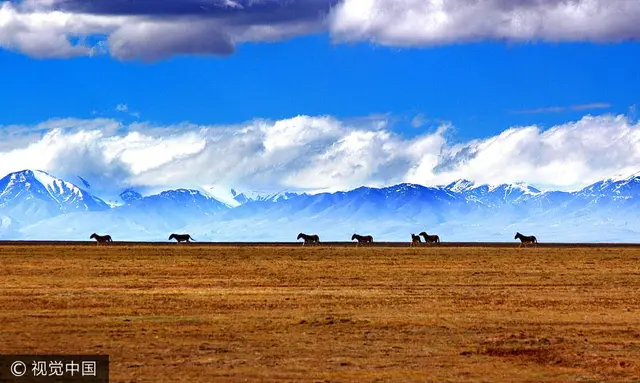At the 41st session of the UNESCOWorld HeritageCommittee in Poland on July 7, 2017, Hoh Xil was recognized as a new world natural heritage site and became the largest one in China with a vast area of 45,000 square kilometres.
Hoh Xil, which means "beautiful girl" in Mongolian, is located in the northeastern p
art
of the Qinghai-Tibetan Platea
u and listed as the largest and highest plateau in the world. With an average elevation of 4,600 meters above sea level on the Qinghai-Tibet Plateau, it is one of the major headwater sources of the Yangtze River. The rest of the region is endorheic, with drainage to numerous isolated lakes.
Hoh Xil National Nature Reserve is China's largest and the world's third largest uninhabited area. Because of the high altitude and fierce weather, it is impossible for people to live there. Therefore, it is the paradise for wildlife and home to more than 230 species of wild animals including endangered species such as the Tibetan antelope, and it comprises several migration routes of the species.
Tibetan antelope, the endemic ungulate in Qinghai-Tibetan Plateau, is part of the IUCN Global Species Program, and recognized as the National Class I Protected animal. In 1997, the first National Nature Reserve established to protect Tibetan antelope was created in Hoh Xil. Around 60,000 Tibetan antelope currently live freely in Hoh Xil National Nature Reserve. The project of world heritage application was launched at the end of 2014 and it took two and a half years to improve Hoh Xil Nature Reserve.
Hoh Xil, which means "beautiful girl" in Mongolian, is located in the northeastern part of the Qinghai-Tibetan Plateau and listed as the largest and highest plateau in the world.[Photo/VCG]
With an average elevation of 4,600 meters above sea level on the Qinghai-Tibet Plateau,Hoh Xil is one of the major headwater sources of the Yangtze River.[Photo/VCG]
Tibetan antelope, the endemic ungulate in Qinghai-Tibetan Plateau, is part of the IUCN Global Species Program, and recognized as the National Class I Protected animal.[Photo/VCG]
 简体中文
简体中文




